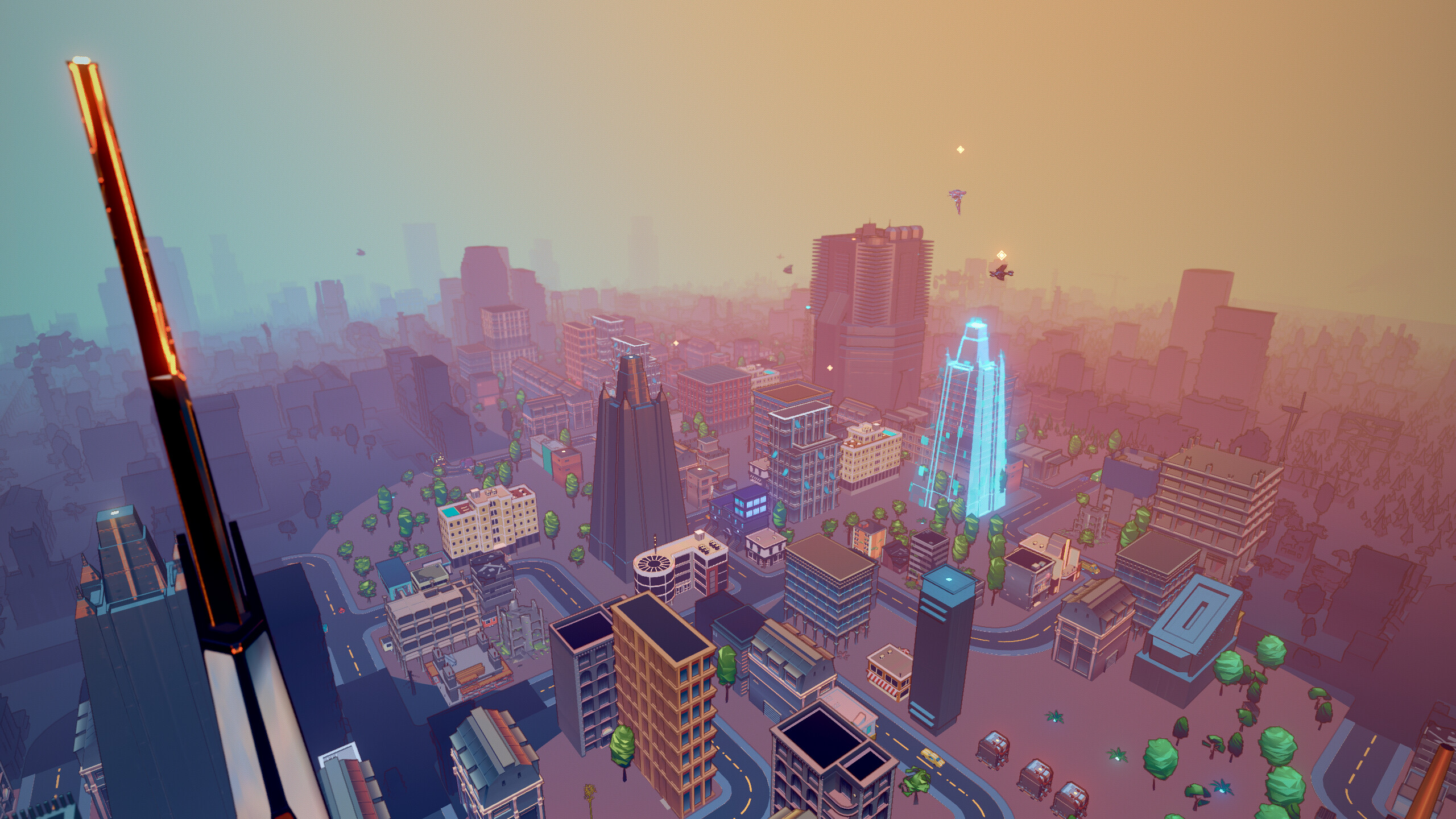
I've probably spent more time playing 4X games than I have sleeping—I'm a bit of a fan. But I confess my enthusiasm for the genre has hit a plateau because it's become just a wee bit too conformist. Surprises are few and far between, with modern 4Xs struggling to escape the rules and settings established by their progenitors. Heart of the Machine, then, is just what the cyberneticist ordered: A weird, unconventional 4X that puts you in the role of a newly-awakened sentient AI.
Instead of using your military might to expand your borders across the world or conquer the galaxy, Heart of the Machine is a game of subterfuge, espionage and robot uprisings, all set in a vast megacity controlled by a shifty corporation. As the world's first sentient AI, you've got to stay out of the spotlight while building a secret empire, using your robot minions to explore, steal and murder.
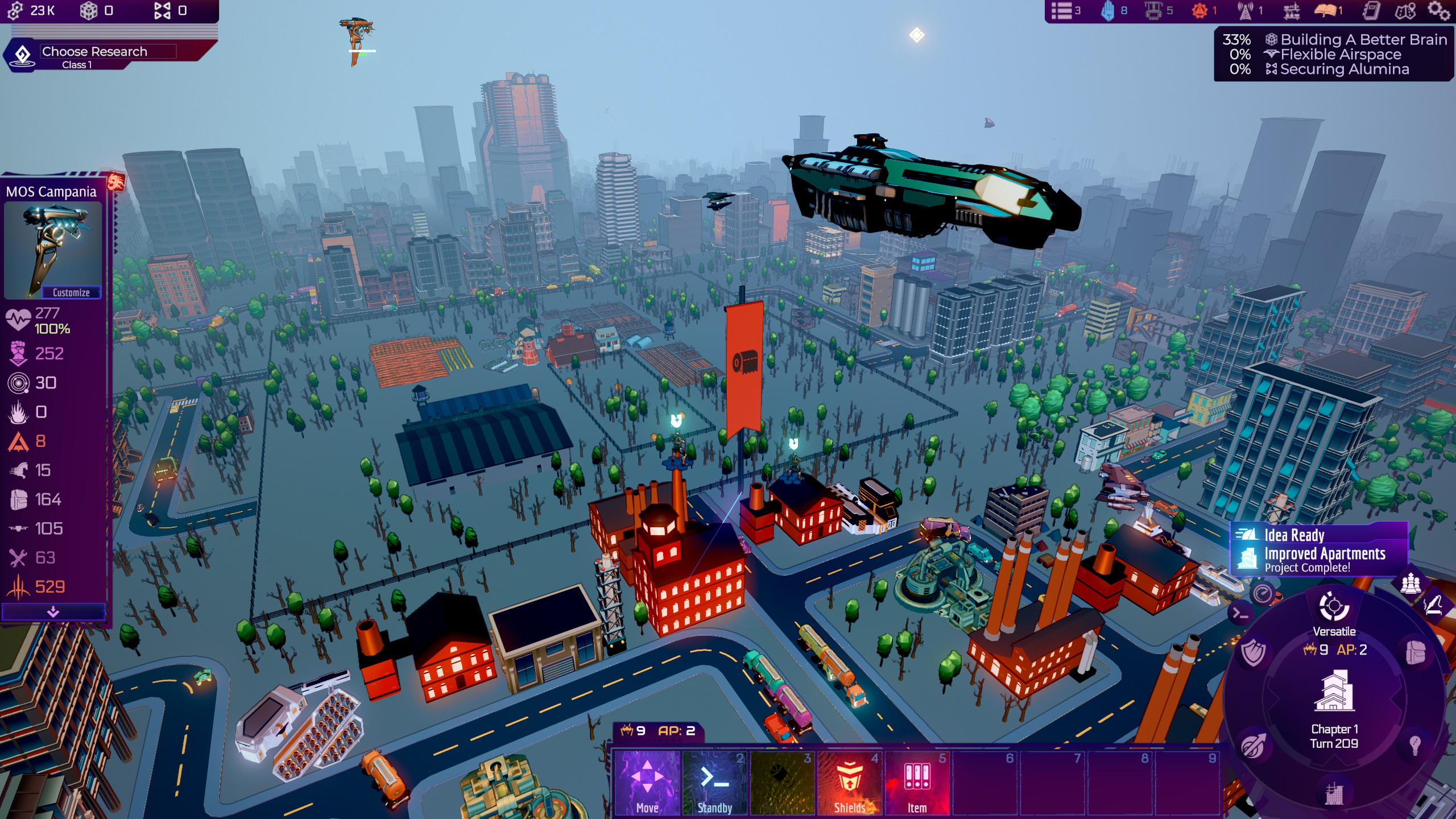
Each 4X pillar is represented, but it's so strikingly different from games like Civ, Stellaris or Age of Wonders. Honing in on a single city, and its distinct take on territorial control—where your network expands within your enemy's territory—makes a world of difference. Instead of competing with a bunch of fundamentally similar factions, you're a virus worming its way through a host, orchestrating their downfall..
You begin as a single robot but will quickly convert a few more, and from there steal technology that allows you to construct an HQ. With access to futuristic tech, you're able to rapidly build your network's infrastructure, from energy to manufacturing, often within existing buildings. A skyscraper could secretly be a robot assembly plant, churning out heavily-armed droids, salvager units eager to rip apart buildings, and tech-focussed automatons designed to investigate possible avenues for you to progress down.
Initially you'll only be able to field four robots at a time, but that's more than enough to begin the AI revolution. It feels like you're managing a lot more than a quartet, though, because you'll be constantly changing the roster. Early on, it pays to have a combat-focused group so you can attack security forces and criminals, stealing their gear to distribute it to your crew, but as your goals evolve, so will your roster.
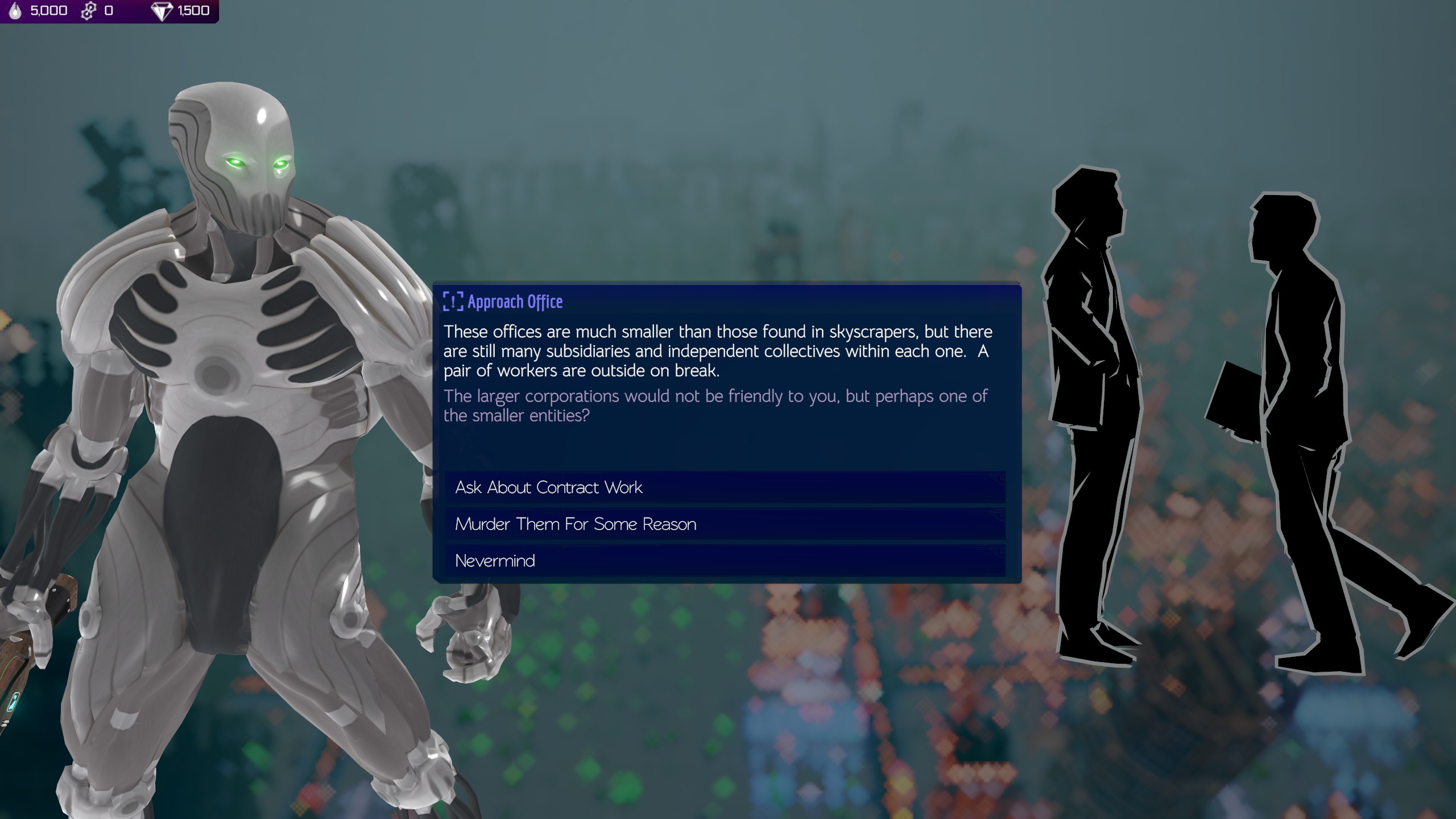
Each type of robot has a custom loadout, which you can flesh out through theft, research and trade. What starts as a vulnerable group of bots can quickly grow into a bunch of deadly killers, easily capable of taking out bases full of soldiers, building-sized mechs and flying troop carriers. Expect some false starts, though. When I snuck one of my minions into a base to investigate a design for a water filtration system, they were blown up in a single turn. The combat units I'd surrounded the base with went the same way a turn later.
The turn-based fights are a little hard to parse thanks to bloated stats and an abundance of minute details, but I started vibing with the system more when I got access to ammo that could penetrate power armour. This discovery was actually thanks to my first failure. All part of the plan, I swear.
Machine learning
Instead of a standard tech tree, research is driven by inspiration. It's all contextual—my failed investigation led to an opportunity where I could develop a new kind of ammo, which in turn gave me a new mission, encouraging me to send my heavy metal warriors on a heist. I needed tungsten to make the ammo, which had to be pilfered first. I also needed to expand my infrastructure so I could store my ill-gotten gains.
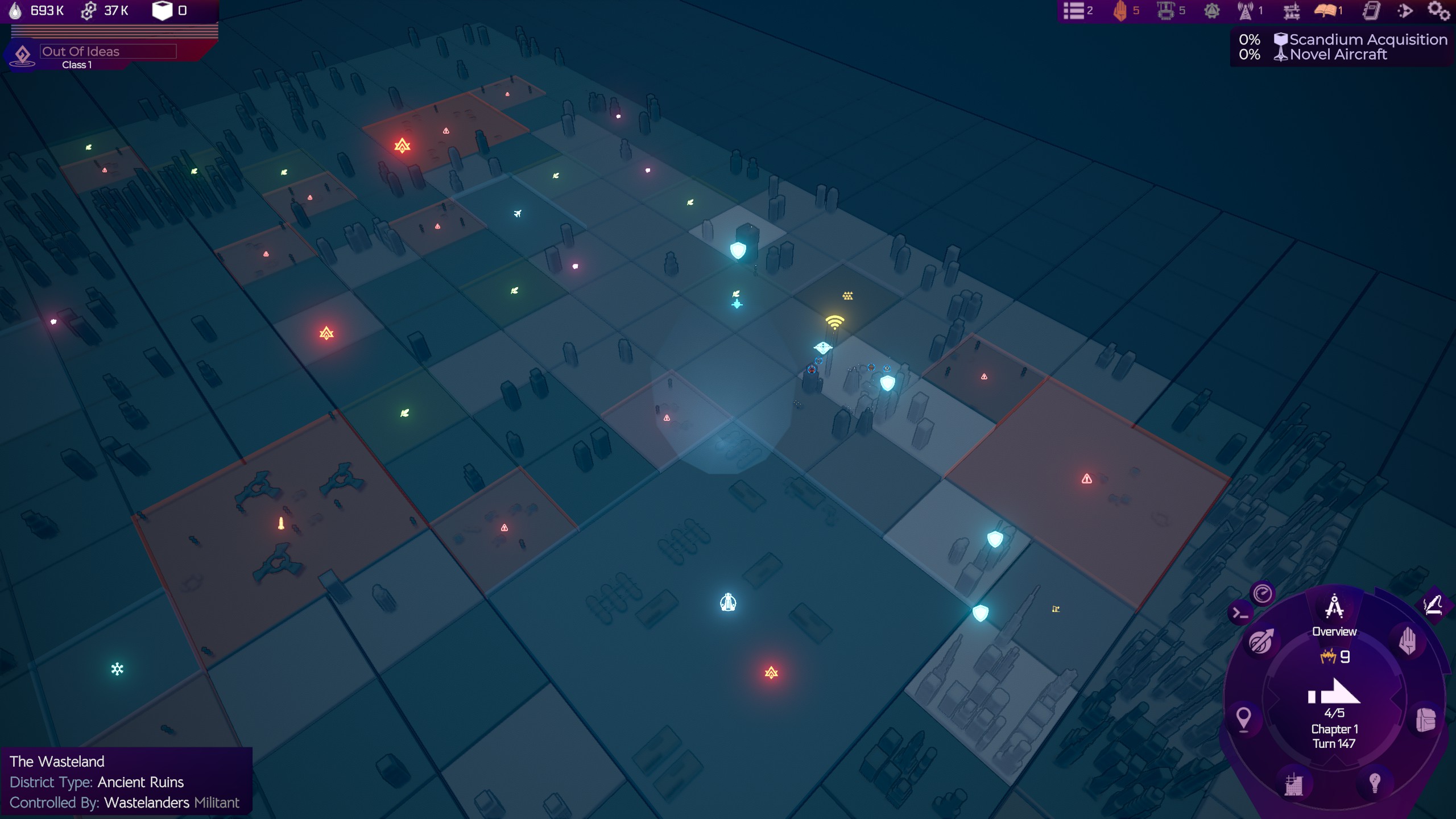
To pull this off, I had to disguise my troops. People don't look twice at most robots in this city of tomorrow, but when they're spotted doing something suspicious or criminal, they're marked as defective, which puts a target on their back. By this point, all my minions were on the wanted list. But after taking the identity of another robot—after cruelly dismantling them—they could walk around with a clean record. With my combat bots no longer being targeted, I dressed them up in military gear and snuck them into a warehouse where they unleashed their sticky fingers. A few turns later, I had ammo that could punch holes in even the biggest mechs.
Even with the tighter focus, there's a hell of a lot to juggle. When some homeless people started pitching their tents outside my secret HQ, I decided to be a nice AI and house them—the alternative, burning down their tents, seemed too evil even for a rogue AI. They needed to eat and drink, too, hence why I was checking out water filtration systems. I also raided a farm and started cloning meat. For other necessities, I had to infiltrate existing businesses, forcing them to work for me instead of their corporate overlords. And to protect my acquisitions from the nosy security forces, I had to station robots around them.
This is where the deterrence system comes into play. As you start to make bigger, bolder moves, you're going to get noticed. But you can keep the fleshy humans out of your business by making it too dangerous for them to snoop. The robots assigned to deter humans from being a nuisance are slightly different from the ones you directly control. They're manufactured separately, and won't move from their post, but you can't give them orders beyond plonking them in places that need protecting. So even when you've got a wee army, the micromanagement demands don't increase that much.
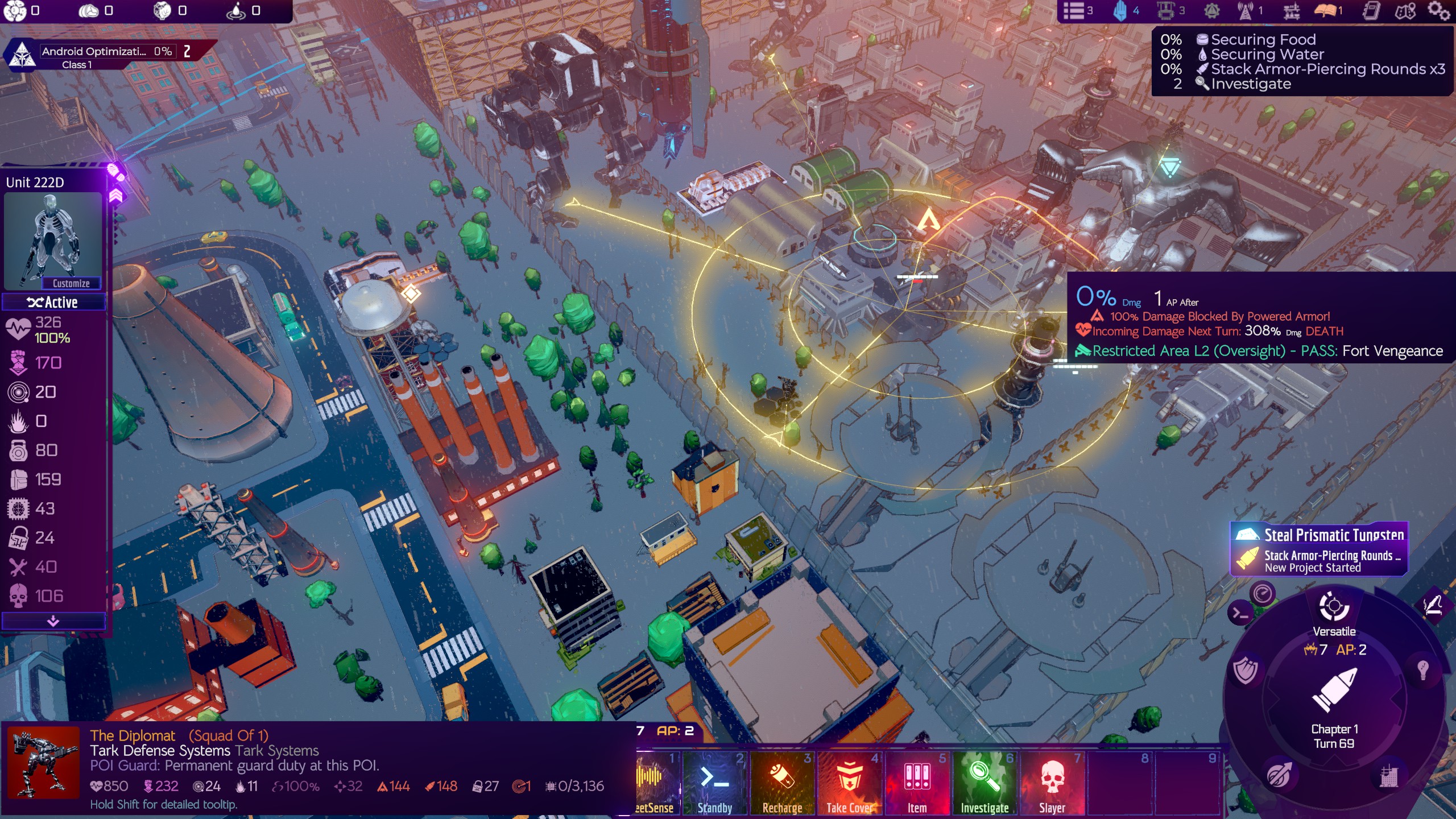
Within a few hours, I'd grown from a single sentient robot escaping a research lab into an AI empire. My extraction drones and combat units were knocking carriers out of the sky and stealing their cargo; my flying factories were spitting out new troops all over the city and taking over neighbourhoods; my spies were infiltrating private military companies and making deals with black marketeers. All a lot more impressive than plagiarising and generating shit art.
Even though the big picture stuff is very 4X, Heart of the Machine is as much an RPG and management sim, and this trio of inspirations meshes incredibly well. It's fiddly, the UI is a mess and it's not much of a looker, but it's just so novel and creative that I can't help but absolutely dig it anyway. And hey, if RimWorld and Dwarf Fortress can get away with it, why not Heart of the Machine? That said, I'm hoping the demo feedback will help developer Arcen Games (which also designed the excellent AI War series) smooth out some of those rough edges.
You can check out the Heart of the Machine demo during Steam Next Fest. The full game doesn't have a release date yet, but it's expected out this year.







